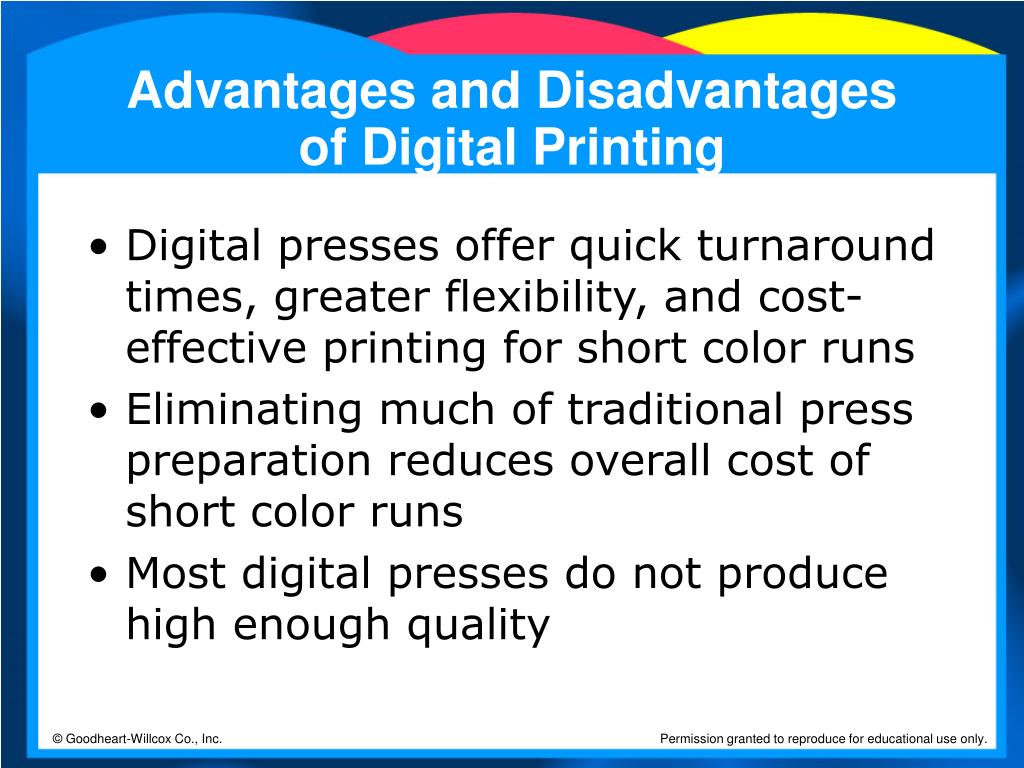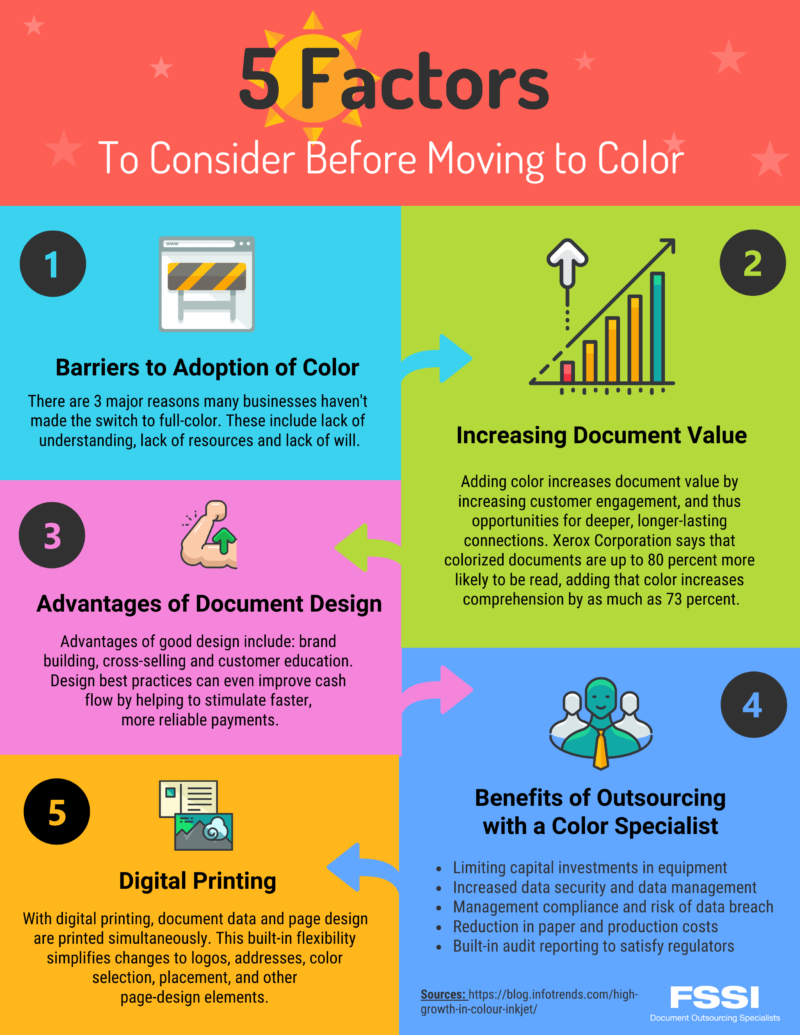The smart Trick of Digital Printing That Nobody is Discussing
The smart Trick of Digital Printing That Nobody is Discussing
Blog Article
Examine This Report about Digital Printing
Table of ContentsDigital Printing for BeginnersSome Of Digital PrintingThe 5-Minute Rule for Digital PrintingWhat Does Digital Printing Mean?The Digital Printing Diaries
Unlike standard offset printing, which relies on mechanical processes, electronic printing makes use of innovative modern technology to create high-grade prints. One of the vital benefits of electronic printing is its.The liquid ink or toner adheres equally to the paper surface area, leading to dynamic and true-to-life colors. Consistency is an additional substantial advantage provided by digital printing. Unlike balanced out printing, where variations can occur because of aspects like plate wear and ink thickness variations, electronic printers consistently provide high-grade prints from the first web page to the last.
Moreover, electronic printing allows for greater adaptability in terms of customization and personalization. With variable data printing capabilities, each printed item can be tailored individually with one-of-a-kind message, images, or styles without sacrificing top quality. Digital Printing. This level of customization opens new opportunities for targeted marketing projects and personalized interaction with clients

4 Easy Facts About Digital Printing Described
With digital printing, each print is generated independently based on need. This removes the need for extreme prints and minimizes wastefulness significantly. By only producing what is required, resources such as paper and ink are saved, making digital printing a much more sustainable alternative. Typical countered printing calls for comprehensive configuration time prior to manufacturing can start.
In contrast, electronic printing has marginal setup demands. The process includes moving electronic data straight to the printer without the need for plate preparation or shade changes.
Digital printers use eco-friendly inks and toners that have reduced degrees of unpredictable natural compounds (VOCs) contrasted to standard offset inks. VOCs are chemicals that add to air pollution when released into the ambience. Along with having reduced VOC content, numerous electronic printers likewise use water-based inks rather than oil-based ones found in offset printers.
The smart Trick of Digital Printing That Nobody is Talking About
Making use of eco-friendly inks and toners in digital printing guarantees that the printing process has a lowered impact on air quality and promotes a healthier working environment site link for printers and print shop employees. To conclude, digital printing offers numerous benefits over traditional offset printing (Digital Printing). It is an economical remedy that permits organizations to save money on printing expenditures
The faster turn-around times provided by electronic printing provide services the possibility to satisfy tight deadlines and respond rapidly to market demands. One of the essential advantages of digital printing is its improved versatility and modification alternatives. This allows organizations to customize their published products according to their one-of-a-kind needs and choices.
A: Digital printing uses faster turn-around times because it requires marginal configuration and preparation contrasted to offset printers. A: Yes! Digital printers give exceptional image top quality with precise color recreation, making sure professional-looking prints each time. A: Yes, electronic printing is a lot more green than countered printing as it decreases waste and eliminates the requirement for chemicals typically used in standard methods.
Embrace the advantages of electronic printing today and unlock its prospective to enhance your advertising and marketing initiatives. Note: The above final thought section has actually been created following the given guidelines for an expert verdict on electronic printing presses. Please note that some requested creating styles, such as jargon, expressions, or colloquial language, useful content may not be appropriate in this context.
Not known Facts About Digital Printing
Offset and electronic printing are both most popular printing approaches for style tasks. The differences in between them are varied, from flexibility and waste to the price ratio of longer or much shorter production runs. Traditional balanced out printing and electronic printing are useful approaches, each has advantages and drawbacks. Picking the far better printing process will eventually rely on your task's particular requirements.

Although the tools's set-up expenses are high originally, added units become fairly more economical as the quantity rises. Countered printing allows for a large range of print products to be utilized throughout manufacturing. It allows the printer to use various paper kinds, personalized coatings, and different inks. The high-grade photos created through countered printing make it the recommended technique, especially among visuals designers, when looking for the best color reproduction, information, and professional-looking prints.
The 6-Second Trick For Digital Printing
The basic printing technique continues to be offset. For electronic inkjet printing, ink is transferred directly onto the surface area. Rather than relying upon aluminum plates and rubber blankets to move an image, electronic printing uses liquid ink throughout manufacturing. Conventional home inkjet printers are one of one of the most typical digital printing approaches.

Report this page